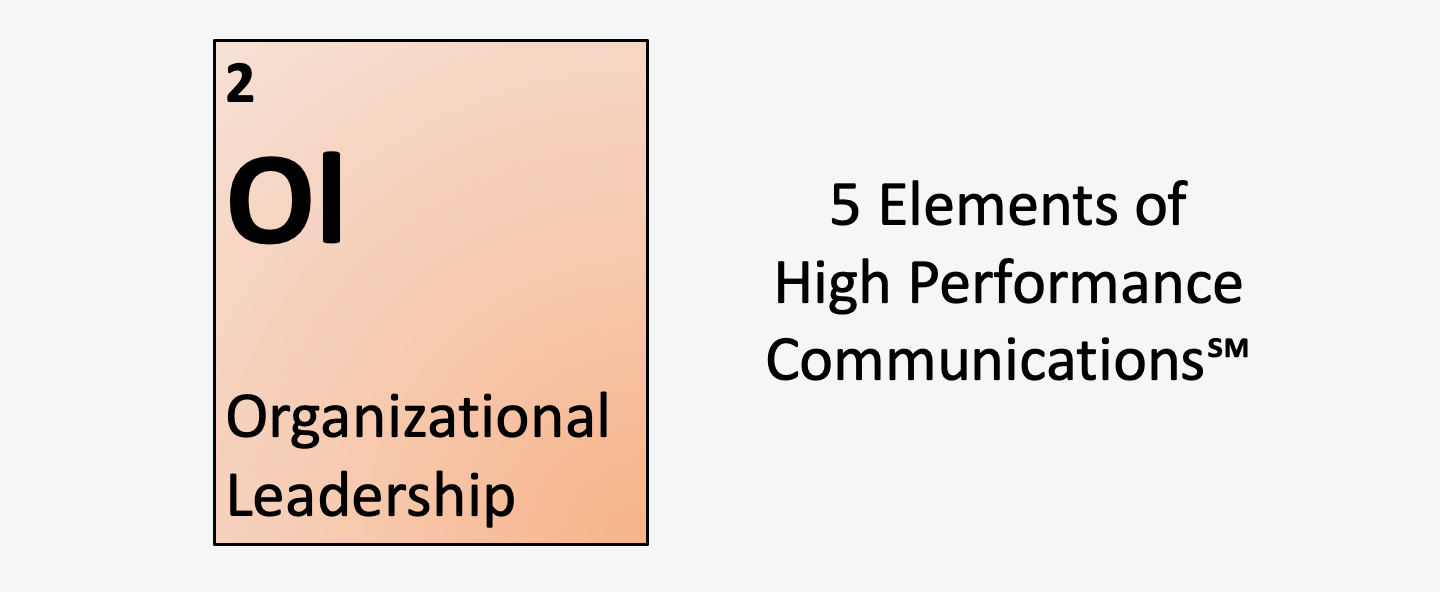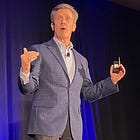Communication Isn’t a Department. It’s a Discipline.
You can’t build public trust with mixed messages, misaligned priorities, and reactive communication. Those aren’t content problems. They’re leadership problems.
Welcome to Part 2 of the 5 Elements of High Performance Communications series. Last week, we started with Strategic Priorities, the idea that great communication begins with alignment. But alignment doesn’t happen by accident. It requires leadership that understands communication is not the icing on the cake. It’s the cake.
This week, we’re focused on the second element: Organizational Leadership—the people and principles that make high performance communications possible.
If you’re constantly playing defense, navigating growing public opposition, or struggling to get departments speaking with one voice, the issue probably isn’t your messaging. It’s your leadership philosophy. The most effective communicators I know aren’t just skilled at crafting content, they work in organizations where communication is embedded as a core leadership value.
Communication is a leadership function
One of the biggest myths in local government is that communication is a downstream activity, something you do after decisions are made. A press release here, a social post there, maybe a newsletter if there’s budget.
In high-performing organizations, communication isn’t an afterthought or a finishing touch. It’s a leadership discipline, shaping decisions from the start. It clarifies strategy and helps build internal and external trust over time.
As I wrote in a Government Communicators Day post, comms professionals aren’t “nice to have.” They’re essential. The most successful leaders I know bring communicators into the room before the decisions are finalized, not because they need wordsmithing, but because they value alignment, transparency, and the ability to anticipate how a decision will land.
As Hope Boyd from the City of Cleburne, Texas, put it:
“We need to be in the room where decisions are being made … before that road project begins, not after the first complaint comes in.”
Influence requires access, trust
Organizational leadership means more than inviting your communications lead to meetings. It means listening to them. Valuing their counsel. Trusting them with the why so they can help explain the what.
Steve Dye, a former city manager and current Police Chief in Allen, Texas, says it best:
“Never make your boss, a peer, or a subordinate guess what’s going on. Over-communicate. Be timely, be responsive, and build trust through consistency.”
His servant leadership framework includes principles that directly impact communications culture:
Be coachable
Be dependable
Lead by example
Bring your energy
Say yes more often
All of that applies whether you’re leading a police department, a public works crew, or a communications team. Great leaders don’t just approve talking points, they create an environment where communication excellence is possible.
Culture starts at the top
Leadership sets the tone for whether your organization communicates well or not. That includes modeling your values, building cross-department trust, and showing up when it counts.
You can see this in Temple, Texas, where City Manager Brynn Myers backed an organization-wide, on-brand Community Summit that pushed departments beyond their usual roles and put the city’s communications team front and center. After the event, even skeptics from other departments acknowledged how effective the effort was—and began to see the comms team as strategic partners rather than just email senders.
Heather Bates, who leads the department, told me:
“After that event, I think we gained a little bit of respect … They saw we do know what we’re talking about.”
That’s what happens when organizational leadership supports comms from the inside out.
Measurement, metrics, and the language of leadership
Communication leaders also must meet executive teams where they are, and that includes how they report impact. Shannah Hayley, from the City of Plano, Texas, urges comms professionals to build reports that speak the language of leadership: outcomes, not output; strategy, not spreadsheets.
Her team’s reporting framework includes:
Strategic goals tied to communications objectives
Meaningful context (what worked, what didn’t, what’s next)
Benchmarks and month-over-month trends
A clear executive summary (aka: the breadcrumbs for future investment)
The goal isn’t to overwhelm, it’s to build credibility by making your work relevant to the people making decisions.
Organizational leadership is everyone’s job
While much of this installment focuses on executive teams, leadership isn’t limited to titles. Comms leads must also lead—by building relationships, managing up, and guiding their organizations toward clarity.
That includes:
Helping departments translate their work into meaningful public narratives
Pushing back on reactive thinking when needed
Protecting their teams from burnout by setting clear priorities
Being ready to say, “We need to stop doing X so we can do Y better.”
Leadership means knowing when to amplify and when to advise. And it means recognizing that credibility starts inside the organization before it ever reaches the public.
Practical takeaways
Ask yourself and your team:
Does your comms lead have a seat at the table, and real input once they’re there?
Do your organizational values shape your communication tone and strategy?
Are you building cross-department relationships that support consistent messaging?
Are you modeling trust, clarity, and responsiveness internally?
Looking ahead
Next week, we’ll turn to Element 3: Citizen Participation & Listening, the keystone of the framework. Because if you want to build trust, you can’t just talk. You have to listen, engage effectively, and be willing to respond.
But for now, look at your org chart, your meeting invites, your decision-making process.
Is communication embedded in your leadership culture, or just orbiting it?
Let’s build the kind of leadership that supports clarity, not chaos.
Let’s play the long game.
Onward and Upward.
Related reads on the road to High Performance
Strong leadership creates the culture where high performance communications can thrive. These folks didn’t just talk leadership, they lived it.








